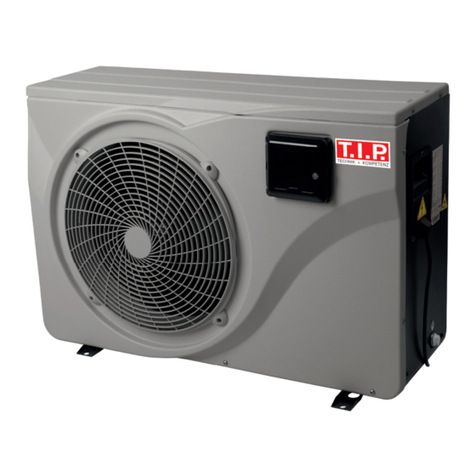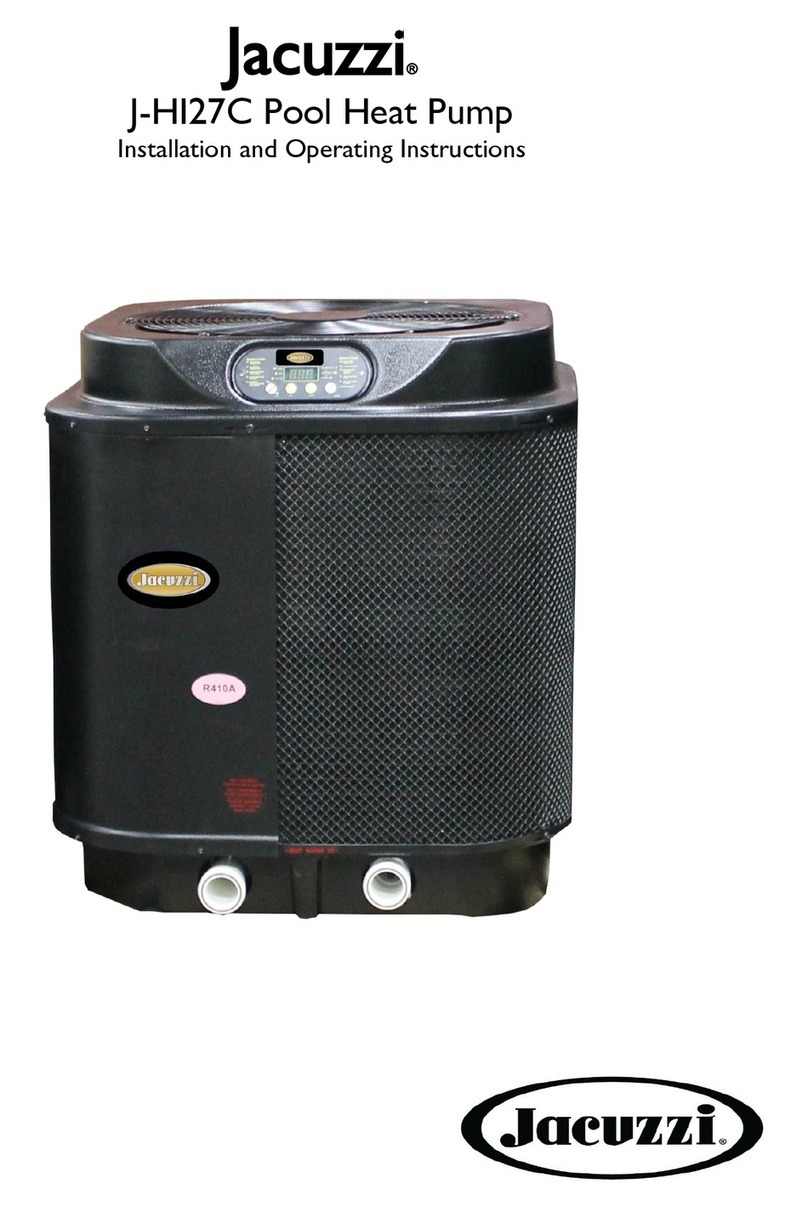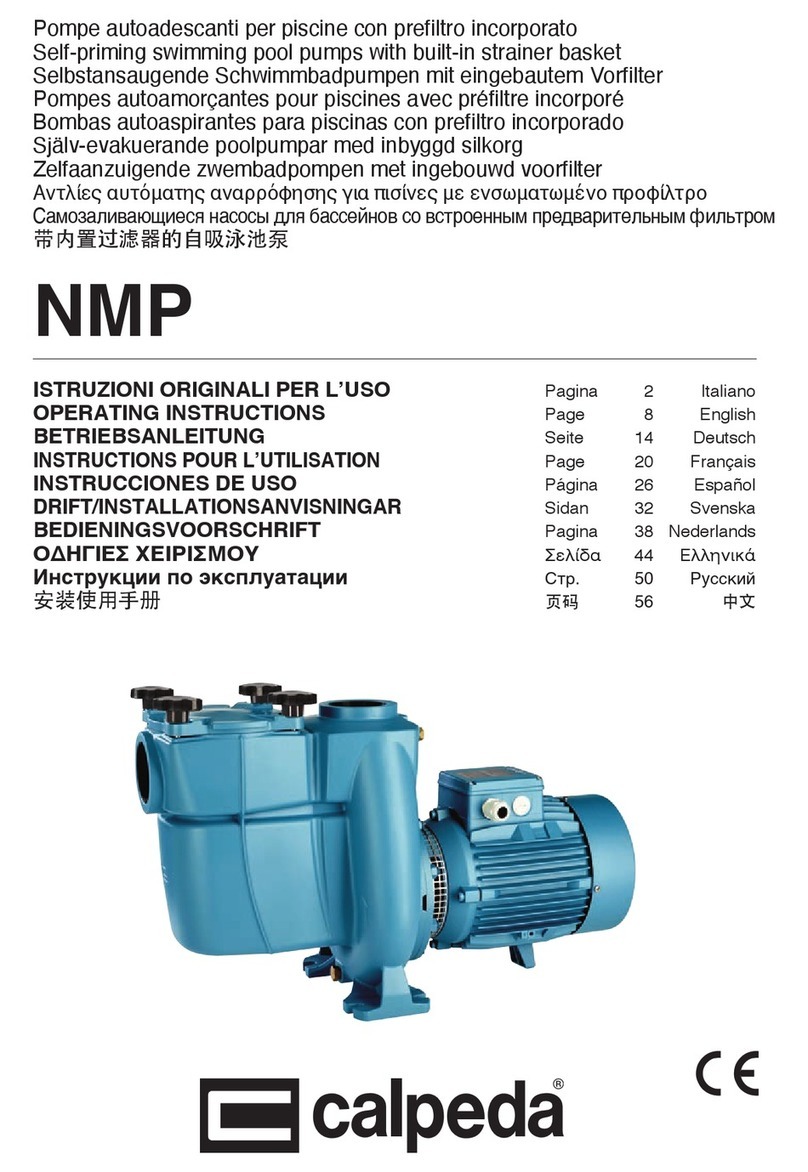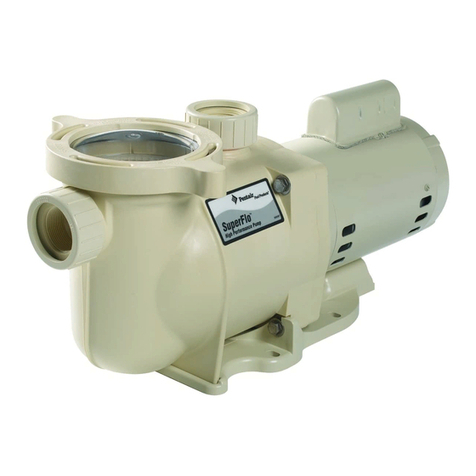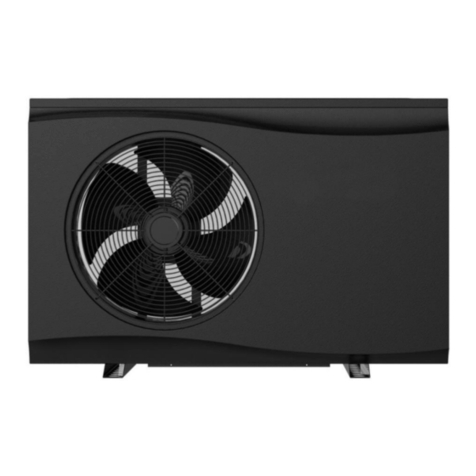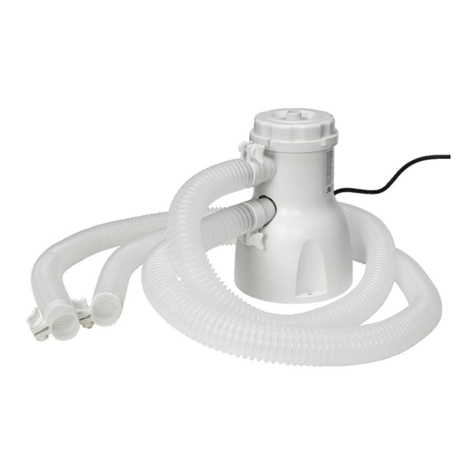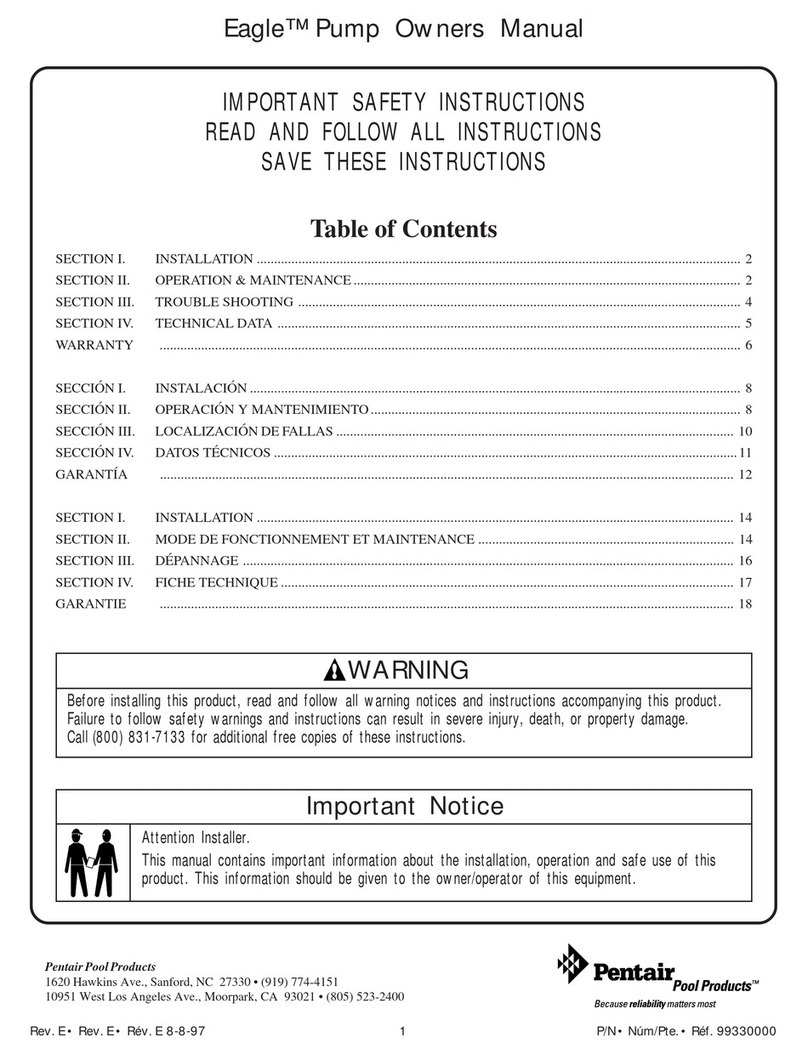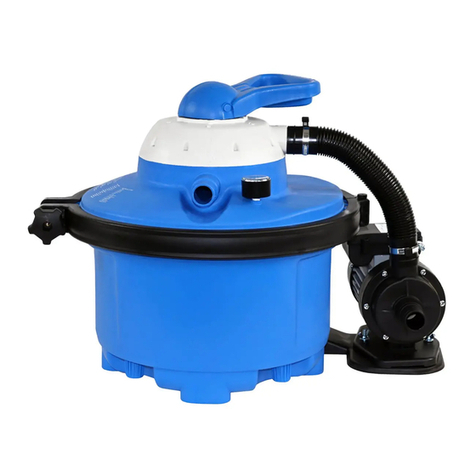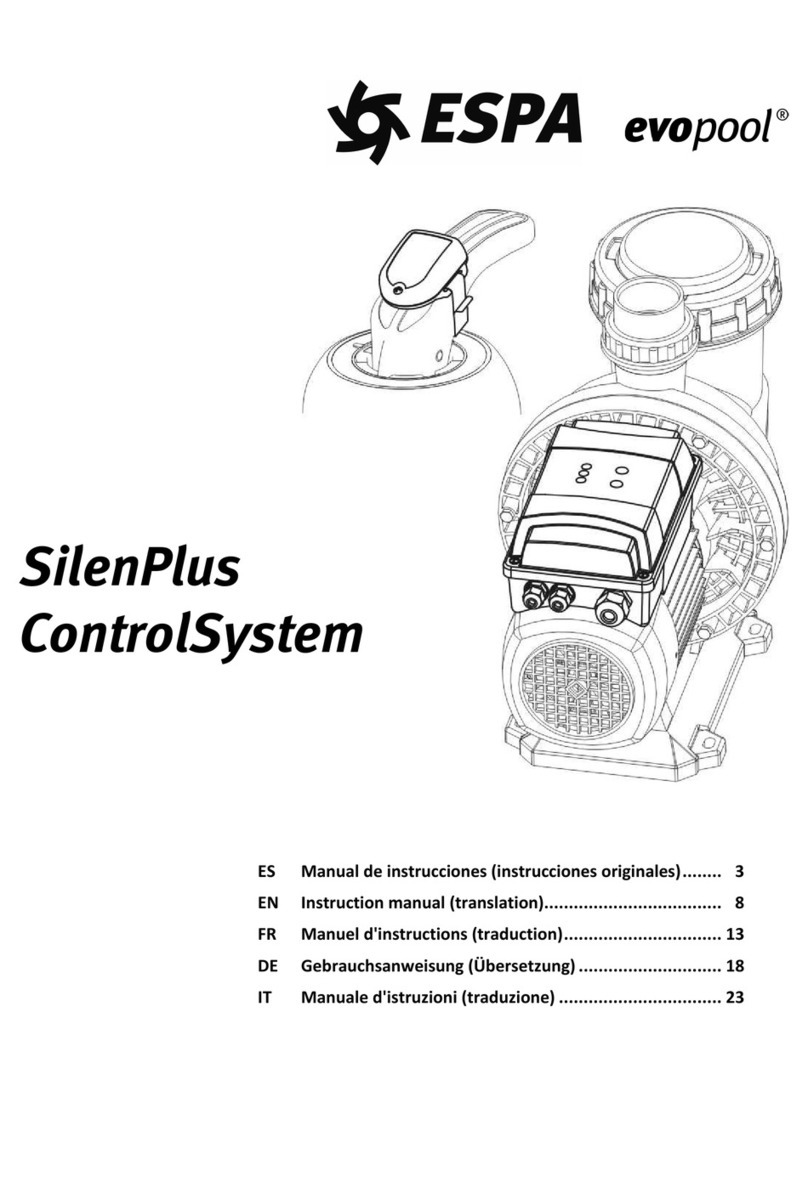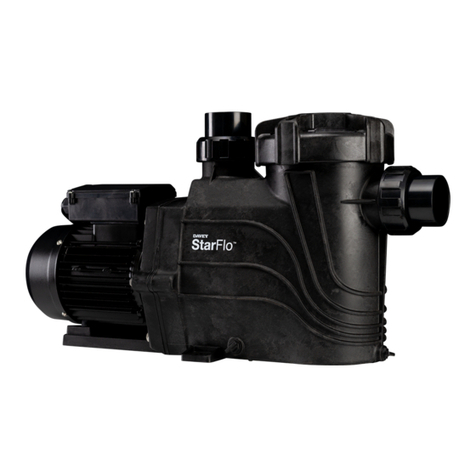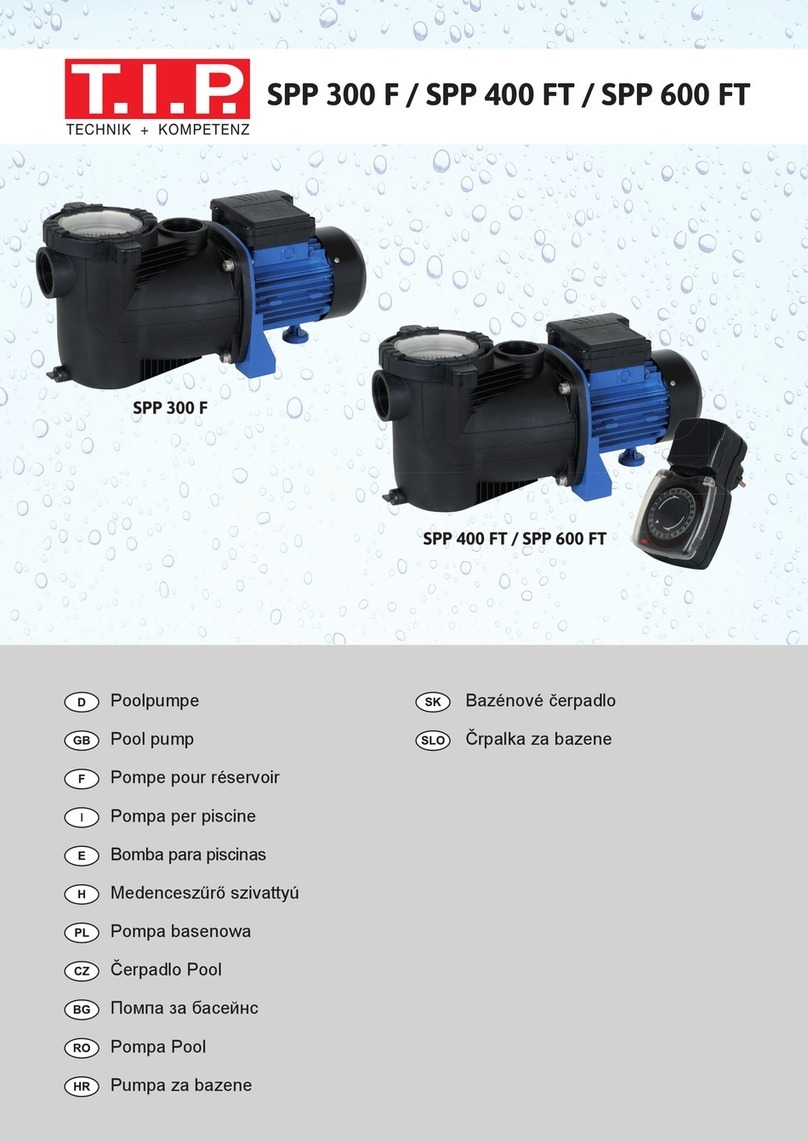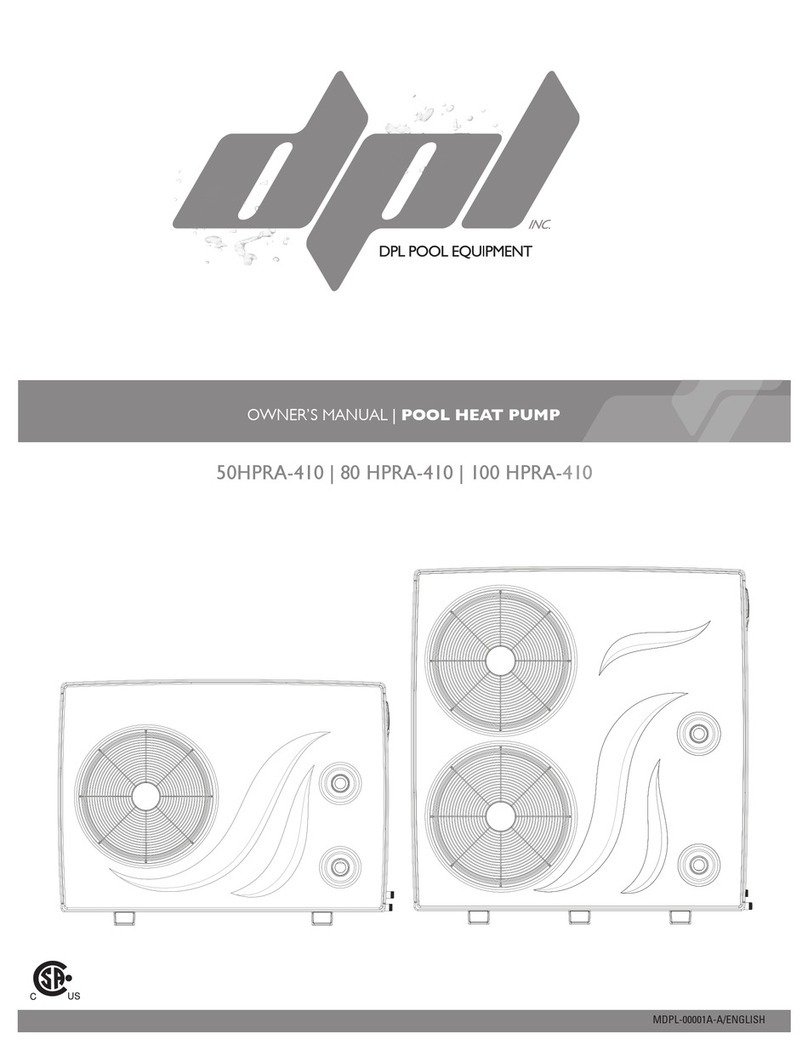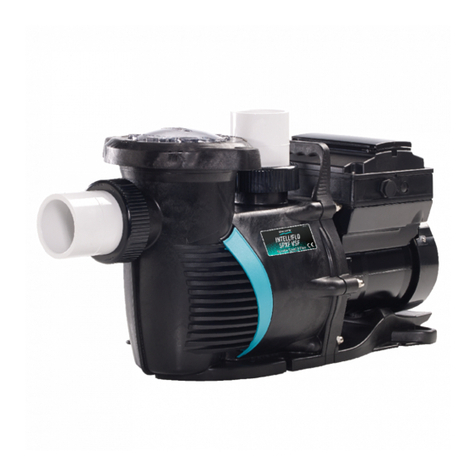8 A Division of:
3. After a few minutes, check whether the air blowing out of the unit is cooler.
4. When the filter pump is turned off, the unit should also turn off automatically, if not, then adjust the flow switch.
Depending on the initial temperature of the water in the swimming pool and the air temperature, it may take several
days to heat the water to the desired temperature. A good swimming pool cover can dramatically reduce the required
length of time.
Water Flow Switch:
It is equipped with a flow switch for protecting the HP unit running with adequate water flow rate. It will turn on when
the pool pump runs and shut it off when the pump shuts off. If the pool water level is higher than 1 m above or below
the heat pump’s automatic adjustment knob, your dealer may need to adjust its initial start-up.
Time delay - The heat pump has a built-in 3-minute start-up delay to protect the circuitry and avoid excessive contact
wear. The unit will restart automatically after this time delay expires. Even a brief power interruption will trigger this
time delay and prevent the unit from restarting immediately. Additional power interruptions during this delay period
do not affect the 3-minute duration of the delay.
3.9 Condensation
The air drawn into the heat pump is cooled by the operation of the heat pump to heat the pool water, which may
cause condensation on the fins of the evaporator. The amount of condensation may be as much as several litres per
hour at high relative humidity. This is sometimes mistakenly regarded as a water leak.
3.10 Operating modes for optimal use
POWER: Used primarily at the beginning of the season because this mode allows for very rapid temperature rise.
SMART: The heat pump has completed its primary task, in this mode; the heat pump is in a position to maintain the
pool water in an energy efficient manner. By automatically adjusting speed of compressor and fan the heat pump
delivers a higher efficiency.
SILENT: In the summer months when the heat output is minimal required, the heat pump in this mode is even more
economic. Added benefit; when the heat pump heats. It does so with minimal noise.
